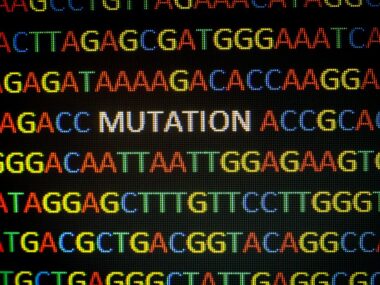Study Identifies Mutations Responsible for Food-induced Cushing’s
Written by |

Mutations in the KDM1A gene are responsible for the development of a rare, food-dependent form of Cushing’s syndrome, according to a recent study.
“In general, rare diseases are generally underdiagnosed in clinics,” Isabelle Bourdeau, MD, the study’s co-author, said in a press release. “By identifying this new gene, we now have a way of diagnosing our patients and their families earlier and thus offer more personalized medicine.”
The study, “Loss of KDM1A in GIP-dependent primary bilateral macronodular adrenal hyperplasia with Cushing’s syndrome: a multicentre, retrospective, cohort study,” was published in The Lancet Diabetes & Endocrinology.
Cushing’s syndrome is characterized by the overproduction of the hormone cortisol by the adrenal glands sitting atop the kidneys, leading to a variety of body-wide symptoms.
“When the tissues of the human body are exposed to this excess of cortisol, the effects for those with the disease are serious: weight gain, high blood pressure, depression, osteoporosis, and heart complications, for example,” said Bourdeau, a researcher and medical professor at the Université de Montréal practicing at the CHUM Research Centre, in Québec, Canada.
Food-induced Cushing’s syndrome is a rare form of the condition in which cortisol levels increase excessively every time the patient eats.
The underlying cause is the altered expression, or production, of a receptor that binds another hormone called glucose-dependent insulinotropic peptide (GIP) in both adrenal glands. This hormone is normally produced in the small intestine in response to food.
Because both adrenal glands are affected, it is thought that people with the condition have a genetic predisposition, but the exact genetic defect remains unknown.
In close collaboration, researchers in France and Canada conducted a genetic analysis on blood and adrenal gland samples collected from local and international biobanks in Canada, France, Italy, Belgium, Greece, and the Netherlands.
“At the CHUM, genetic analysis is already offered in our Genetic Medicine Division,” Bourdeau added.
The researchers examined samples from 17 people with GIP-dependent Cushing’s syndrome. The median average age was 43.3 years, and 15 (88%) of the patients were women. The researchers then compared observations made in this group of patients with those made in a patient control group.
The control group included 29 individuals with non-GIP-dependent Cushing’s affecting both adrenal glands or GIP-dependent disease involving only one adrenal gland. Adrenal tissue was obtained following the surgical removal of the adrenal glands.
Extensive genetic analysis revealed that all 17 patients with GIP-dependent Cushing’s carried disease-causing mutations in a gene called KDM1A, which encodes the enzyme lysine-specific histone demethylase 1A. This enzyme is known to be part of several protein complexes that silences, or inactivates, certain genes.
Further investigation showed that part of the short arm of chromosome 1 — the region where KDM1A is normally found — was also missing in these patients. In comparison, none of the 29 control patients had KDM1A mutations.
A global analysis also showed the activity of the gene that carries instructions for making the GIP receptor was significantly enhanced in samples from GIP-dependent Cushing’s patients compared with controls.
In a human adrenal cell line, blocking the KDM1A enzyme with small-molecule compounds or inactivating the KDM1A gene increased GIP receptor gene activity and protein levels, confirming the results.
“We propose that GIP-dependent … Cushing’s syndrome results from a two-hit inactivation of KDM1A,” the researchers wrote. “Genetic testing and counselling should be offered to these patients and their relatives.”







